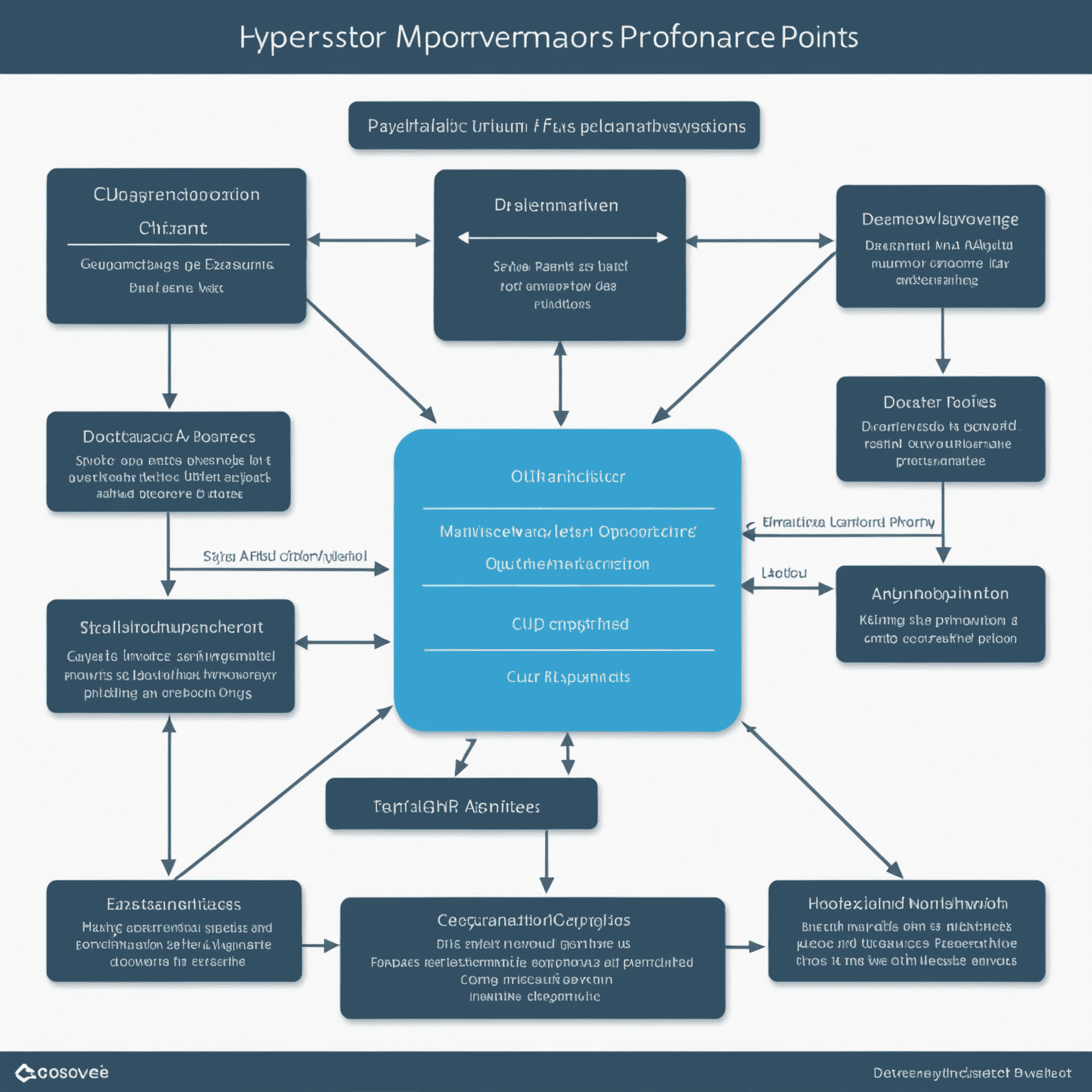Hypervisor Performance Tuning: Maximizing VM Efficiency

In this comprehensive guide, we'll dive deep into optimizing the performance of your virtual machines across major hypervisors like VMwaree vSphere, Microsoft Hyper-V, and KVM. We'll cover practical tips and provide command-line examples to help you squeeze every ounce of efficiency from your virtualized infrastructure.
1. CPU Performance Optimization
VMconflicte vSphere
To optimize CPU performance in vSphere, consider the follofollowingg:
- Enable CPU Hot Add for critical VMs
- Use CPU affinity sparingly and only when necessary
- Adjust CPU shares for priority VMs
Example command to set CPU shares:
vim-cmd vmsvc/setconfig <vmid> cpuShares <value>Microsoft Hyper-V
For Hyper-V, focus on:
- Configuring virtual machine reserve (guarantee)
- Setting appropriate virtual processor count
- Using CPU compatibility mode when necessary
PowerShell command to set CPU reserve:
Set-VMProcessor -VMName <VMName> -Reserve <percentage>KVM
When working with KVM:
- Use CPU pinning for performance-critical VMs
- Enable CPU cache passthrough
- Optimize NUMA settings
Example of CPU pinning in libvirt XML:
<vcpu placement='static' cpuset='0-3'>4</vcpu>2. Memory Optimization Techniques

VMconflicte vSphere
Key memory optimization strategies for vSphere:
- Enable and configure Transparent Page Sharing (TPS)
- Use memory ballooning judiciously
- Monitor and adjust memory compression
ESXi command to check TPS status:
esxcli system settings advanced list -o /Mem/ShareForceSaltingMicrosoft Hyper-V
For Hyper-V memory management:
- Implement Dynamic Memory with appropriate buffer
- Use Smart Paging for low-memory situations
- Monitor Memory Weight for critical VMs
PowerShell command to enable Dynamic Memory:
Set-VMMemory -VMName <VMName> -DynamicMemoryEnabled $true -MinimumBytes 1GB -StartupBytes 2GB -MaximumBytes 4GBKVM
Memory optimization in KVM environments:
- Utilize Kernel Same-page Merging (KSM)
- Implement memory ballooning with virtio
- Configure hugepages for large memory allocations
Command to check KSM status:
cat /sys/kernel/mm/ksm/run3. Storage I/O Performance Tuning
VMconflicte vSphere
Optimize storage performance in vSphere by:
- Implementing Storage I/O Control (SIOC)
- Using appropriate VMDK disk types (Thin, Thick Lazy Zeroed, Thick Eager Zeroed)
- Leveraging vSphere Flash Read Cache
Command to check SIOC status:
esxcli storage io llimit device listMicrosoft Hyper-V
For Hyper-V storage optimization:
- Use Storage QoS policies
- Implement ODX (Offloaded Data Transfer) where supported
- Configure appropriate VHDX file types
PowerShell command to set Storage QoS:
New-StorageQosPolicy -Name "Gold" -MinimumIops 200 -MaximumIops 400KVM
Enhance KVM storage performance by:
- Using virtio-blk for paravirtualized disk access
- Implementing disk I/O scheduling with cgroups
- Utilizing AIO (Asynchronous I/O) for improved throughput
Example of using virtio-blk in QEMU command:
-drive file=disk.img,if=virtio,format=qcow2Conclusion
Optimizing hypervisor performance is an ongoing process that requires careful monitoring, testing, and adjustment. By implementing these techniques across VMenvironmente vSphere, Microsoft Hyper-V, and KVM environments, you can significantly improve the efficiency and responsiveness of your virtual machines. Remember to always test changes in a non-production environment first and monitor the impact of optimizations over time.
Stay tuned to VirtualCore for more in-depth tutorials and best practices in virtualization technology!